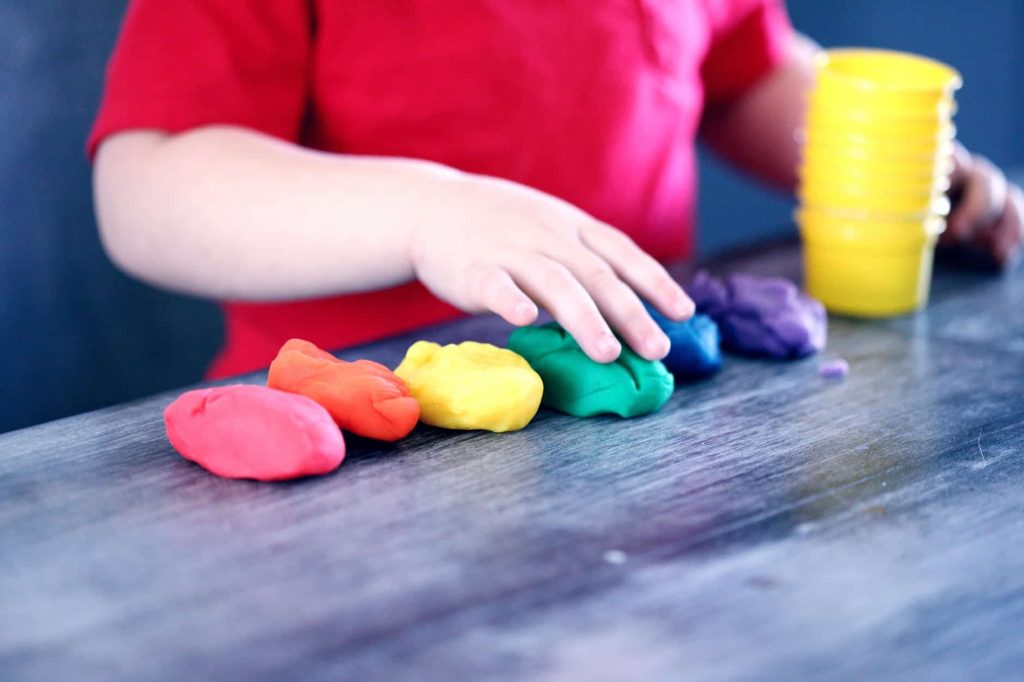Occupational therapists work with clients to provide skills for the job of living! Children may be referred for an occupational therapy (OT) evaluation for a variety of reasons. These reasons may include a new or existing medical diagnosis, ASD, ADHD, fine motor difficulties, sensory processing concerns, handwriting, poor social skills, visual deficits, among many others! An OT evaluation includes a thorough review of the patient’s medical and behavioral health history, skilled observation, caregiver and client interview, and standardized testing. The written evaluation includes a variety of acronyms and words that can sometimes be confusing. Below is a description of common occupational therapy terms that may be included as part of the written evaluation.
Occupation: daily life activities in which people engage
ADL: Activities of Daily Living which include taking care of one’s own body and are fundamental to living. These activities include dressing, bathing/showering, toileting, eating/feeding, functional mobility, and personal hygiene/grooming.
IADL: Instrumental Activities of Daily Living are activities that support daily life at home and in the community. These activities include caring for others/pets, health management, financial management, home maintenance, meal preparation, safety, and shopping.
Rest & sleep: activities related to obtaining rest and sleep that supports engagement in other occupations. This includes rest, sleep preparation, and sleep participation.
Education: activities needed for learning and participating in the educational environment. Participating in academic, non-academic extracurricular, and vocational activities. Identifying topics and methods for obtaining information or skills.
Play: a spontaneous or organized activity that provides enjoyment or amusement. This includes play exploration and participation.
Work: employment interests and pursuits, employment seeking and acquisition, and job performance.
Leisure: a preferred activity that is intrinsically motivated and non-obligatory. Includes both exploration and participation in these activities.
Social Participation: engagement in a variety of occupations that support interaction with others including community, family, and peers/friends.
Core muscles: muscles in the abdomen and mid/lower back. When they contract they support the spine, pelvis, and shoulders to give a solid base of support.
BUE: bilateral upper extremity (both arms)
Reflexes: built-in mechanisms to help a baby for movements to resist gravity, protect from danger and loud noises, eat, grasp, and move. As these movements are repeated, the baby gets stronger and movements become purposeful.
Reflex integration: the disappearance of reflexes that are replaced with purposeful movements. Babies and children need movement throughout development to explore the environment and to strengthen muscles. If a baby does not complete movement progression they may experience difficulties later in life.
Motor Planning: the connection between brain and body to execute a purposeful movement.
Fine motor skills: use of arms, hands, and fingers to complete simple and complex movements. These skills may include different types of grasp, in-hand manipulation,
Sensory Modulation: processing the input received through our senses and producing a correct output. Dysfunction persists when the response produced does not match the level required. Some children have heightened states of arousal, some have lower, and some have mixed.
Body regulation: providing an appropriate response to stimuli received.
Vestibular: movement detection. This sense is stimulated when the child is moving in different directions or at different speeds. It is an important piece in the development of posture, balance, and coordination. Additionally, it provides us with gravitational security which increases comfort in movement without feeling like you’re falling.
Proprioceptive: body awareness. This sense is stimulated when a child experiences pressure or during use of arms/legs against a force, and helps the child determine their position in space. Additionally, it helps to regulate the direction of movement and how much force is used. This can include pushing, pulling, lifting, or hanging.
Tactile: touch. This sense aids in the detection of light touch, deep pressure, texture, temperature, vibration, and pain through receptors in the skin. It is important for body awareness, hand use, and motor planning.
Olfactory: smell. This sense allows for differentiation between odors and send that information to the brain. Sense of smell is linked to positive and negative memories that affect our moods. Additionally, this is a protective sense against toxins and other odorous substances.
Auditory: hearing. This sense helps a child with noise detection and processing in order to generate an appropriate response. This is important for listening skills, communication, and social skills.
Gustatory: taste. This sense is used to detect and perceive taste, and texture in the mouth. Taste is received through taste buds on the tongue. Children use this sense to identify foods based on taste, texture, and temperature.
Visual: sight. This sense perceives light through the eyes to detect objects and collect information which is then interpreted by the brain. The visual system works closely with other senses to aid is safe navigation and location of objects in the environment.
Visual Perception: appropriate interpretation of visual input.
Convergence: the ability of both eyes to work together to focus on an object or item.
Form Constancy: to understand whether a shape is the same regardless of changes in size, rotation, or color.
Figure Ground: finding a specific item amidst many other items.
Visual Discrimination: the ability to differentiate between objects and forms, and to notice subtle changes.
Visual Closure: the ability to look at an incomplete shape or object and fill in the missing components to identify a complete item.
Spatial Relations: determining when one part of a form is turned differently from another part.
About the Author: Bailey Palladino, MS, OTRL is a licensed occupational therapist specializing in autism spectrum disorders, ADHD, and developmental delay. She is a member of the clinical team at BRAINS in Grand Rapids, Michigan. Read more about Bailey click here.
